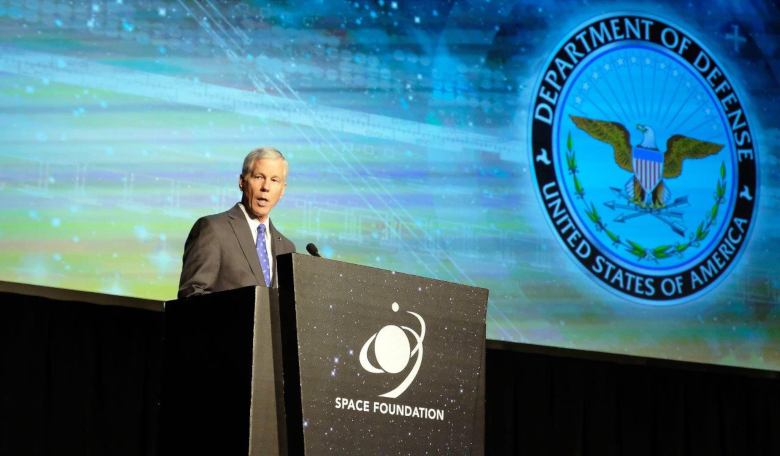US government space leaders Tuesday offered justification for their ambitious plans to reorganise the nation’s civil and military space efforts and to accelerate exploration programmes, including the new goal announced in recent weeks to land American astronauts on the moon by 2024.
On the first full day of the 35th Space Symposium in Colorado Springs, Colorado, acting Secretary of Defense Patrick Shanahan described “a unified, whole-of-government plan to ensure US leadership. For the Department of Defense, this means growing our margin of dominance in space” to meet advancing threats, Shanahan said. “Weapons are currently deployed by our competitors that can attack our assets in space.”
He referred to the Chinese military’s ability to jam satellite communications and the expectation that China will start to deploy direct-energy weapons: “We expect them to field a ground-based laser system aimed at low-Earth-orbit space sensors.”
The Defense Department wants to create a joint-service military command, US Space Command; a Space Development Agency to continue developing technology; and a new Space Force branch of the US military.
“Just as we developed the US Navy to ensure free navigation of the seas, we need a military organization to ensure free navigation of the stars,” Shanahan said.
Secretary of Commerce Wilbur Ross advocated for his department’s proposed new Bureau of Space Commerce in terms of a burgeoning global space economy he thinks could amount to $3 trillion a year by 2040.
“To reach such goals, we need continued innovation in traditional areas of space communications, remote sensing, navigation and weather,” Ross said. “But we also anticipate new market segments like robotics, additive manufacturing, satellite servicing, space tourism, debris removal and resource mining.”
The Commerce Department expects to take the lead role in space situational awareness and space traffic management as Earth’s orbit gets increasingly crowded, Ross said.
NASA Administrator Jim Bridenstine elaborated on his agency’s plan to send US astronauts – including at least one woman – to the moon’s surface by 2024. NASA had been working toward achieving that goal by 2028 under US President Donald Trumps Space Policy Directive 1.
“Well know this: Nothing has changed from Space Policy Directive 1,” Bridenstine said. “The direction was to go to the moon – a lunar return. But it was different than anything we’ve ever done before. This is not a re-creation of Apollo. This is a sustainable return to the moon. We’re going to go back and forth to the moon with landers, rovers, robots, humans. We can have access to the entirety of the moon. Anytime we want, anywhere we want, we can get to the surface of the moon.”
He envisions reorganising the agency to include a new Moon to Mars Mission Directorate.
The Trump administration already submitted its fiscal year 2020 budget request to Congress. Bridenstine acknowledged that NASA will amend the request but didn’t mention a cost figure to accelerate the plan. He said the plan won’t “cannibalise” other programs such as the International Space Station or NASA’s science missions.
Bridenstine announced that NASA will pursue public-private partnerships for ascent and descent vehicles to carry astronauts back and forth to the moon’s surface from the planned Gateway command and service module in orbit.
But the US won’t do it all alone, he said. International partnerships will be critical:
“In fact, none of us can do what we want to achieve alone.”
- ROOM is a media sponsor of the 35th Space Symposium and has a stand in the Lockheed Martin exhibition pavilion.











